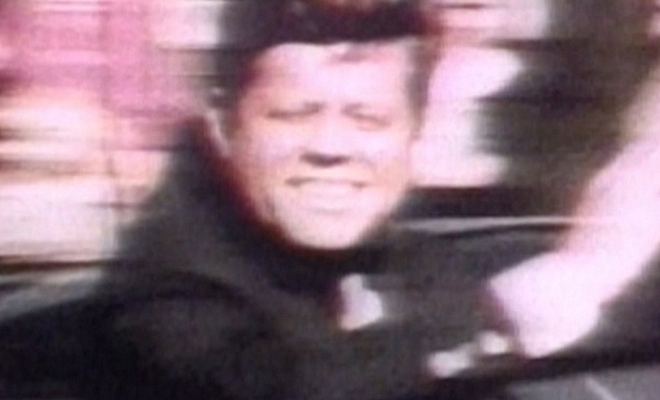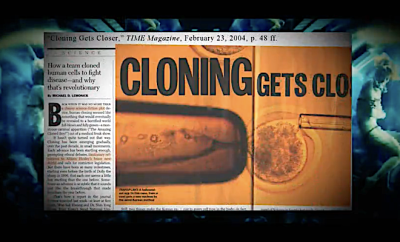
DEEP STATE
George Bush And The Murder of John F. Kennedy
by John Hankey, The Dark Legacy:
It Never Ends – MORE Startling Evidence of Bush in Dallas
TheDarkLegacy.com
I don’t think we are much encouraged to see History as science. Quite the opposite, actually. And of course, that’s all politics. The winners write history, and the truth be damned. Even science can have trouble trying to act like science when political issues are involved, as we see with evolution, tobacco-and-cancer, and global warming. But I think History does have a lot in common with physical science. For example, I can remember when “Continental Drift”, the idea that Africa and America were once stuck together, was very much considered “just a theory”; ridiculed by some, and regarded with amusement by many, and promulgated as likely by a tiny minority. But as time goes by, the evidence accumulates; and the meaning of old evidence begins to settle in; and ideas that were once considered outrageous gradually get worn in and start to be regarded as obvious common sense. Part of this process is the continual accumulation of new evidence. New pieces are added to the puzzle and the picture becomes more clear. And sometimes the hidden meaning of old evidence, that has been lying around for years, suddenly jumps out. Evidence of the fossils and minerals that can be found on the east coast of Africa, and on the west coast of Brazil, may have been lying around for years, before someone decided to look and see if they matched, and found that they did; and proved conclusively that west Africa and Brazil were once attached.
With regard to George HW Bush and the murder of John Kennedy, Joseph McBride found this memo in 1988.

FBI director J. Edgar Hoover wrote this memo 5 days after the assassination, naming George Bush as a CIA officer.
The last, and most crucial paragraph, is very hard to read. The following is a transcription:
“The substance of the forgoing information was orally furnished to Mr. George Bush of the Central Intelligence Agency and Captain William Edwards of the Defense Intelligence Agency on November 23, 1963, by Mr. V.T. Forsyth of this Bureau.”
When it was first released in 1978, George Bush was an obscure bureaucrat, a virtual unknown. So when the best researchers on the planet saw this memo in 1978, they didn’t pay much attention to it. When Bush became vice president two years later, no one was able to connect his now well-known name to this obscure memo. But when Joseph McBride was messing around in 1988, Bush was running for president; and when McBride saw the memo, he jumped up and shouted “Hey, this memo is about Bush! It says he was in the CIA, way back in 1963!”
And for the longest time, the focus was on this simple isolated fact: that Hoover said Bush was in the CIA in ’63. Bush said the memo must be referring to another “George Bush,” because he wasn’t in the CIA at that time. But over the years, people were able to assemble the facts from Bush’s personal life, showing his deep involvement with the CIA at that time, and with the CIA’s anti-Castro Cubans (in the memo, Hoover calls them “misguided anti-Castro Cubans”). And over time, it has become undeniable; that Hoover was referring, in his memo, to none other than George Herbert Walker Bush. And for a while, that was it. End of story.
But the title of this Hoover memo is, “Assassination of President John Fitzgerald Kennedy”. Isn’t that important? Well, you’d think so. But for the longest time, no one made much out it. Besides, Hoover scarcely mentions the assassination in the memo, instead focusing on these “misguided anti-Castro Cubans.” The body of the memo does not appear, at first, to be in any way related to the title of the memo “the assassination of President John F Kennedy”. But then Mark Lane, in his book Rush to Judgment, did the fabulous work of demonstrating, and in fact persuading a jury, that E. Howard Hunt, a major lieutenant in the CIA’s “misguided anti-Castro Cuban” program, was in Dallas and involved in the assassination. With this background, with this framework to guide the researcher, it was then possible to assemble the considerable evidence linking Bush to Hunt.
People might have taken some notice before that Bush made the unusual request, as Nixon’s ambassador to the UN, to be given an office in the White House. They may have noticed that Hunt, although he was not being paid by anyone in the White House, or answering to anyone that we know of in the White House, also had a White House office. But with the Hoover memo in hand, establishing Bush as a supervisor of the CIA’s “misguided anti-Castro Cuban” operation, it is possible to connect Bush to Hunt at the Bay of Pigs. With this memo in hand, it is possible to connect Bush and Hunt as two CIA operatives with offices inside the White House. With this memo in hand, it is possible to answer who it was that Hunt answered to inside the White House; and how he got the office in the first place. And with all that, it is possible to connect Bush to Hunt, and therefore to Dallas, to Hunt in Dallas, and to the “misguided anti-Castro Cuban” assassins of John Kennedy. Which is what Hoover did for us when he wrote the title of the memo. Little by little, the pieces start to fall into place. And pieces that in isolation meant nothing, become key parts of a whole picture.
But even so, this is not a rock-solid connection: Hunt was directly involved in the murder of JFK. And Bush supervised Hunt. But Bush probably supervised a lot of CIA people, not all of whom were directly involved in the assassination. A high-ranking officer may be connected to all of the acts of all of his troops, by reason of his being their commander. But it’s not a direct connection. It doesn’t establish that the officer knew about, or approved of, or was involved in, all the actions of those troops.
Enter FBI memo # 2:

It will come up again in a minute, so please read the first line carefully. Bush identifies himself to the FBI as an independent oil man from Houston.
This memo establishes that sort of direct connection between Bush and Hunt, in Dallas, on the day of the assassination. This memo records Bush’s phone call to the FBI, precisely an hour and fifteen minutes after the assassination. When I first encountered this memo, and when I first put it into my movie, JFK II, I simply called it “weird”. I saw it only in isolation, a weird, isolated connection between Bush and the assassination. It took me years to see it in context. That is, to see that this phone call demonstrates, clearly, that George Bush, was on duty that day.
Read much, much more @ The Dark Legacy












